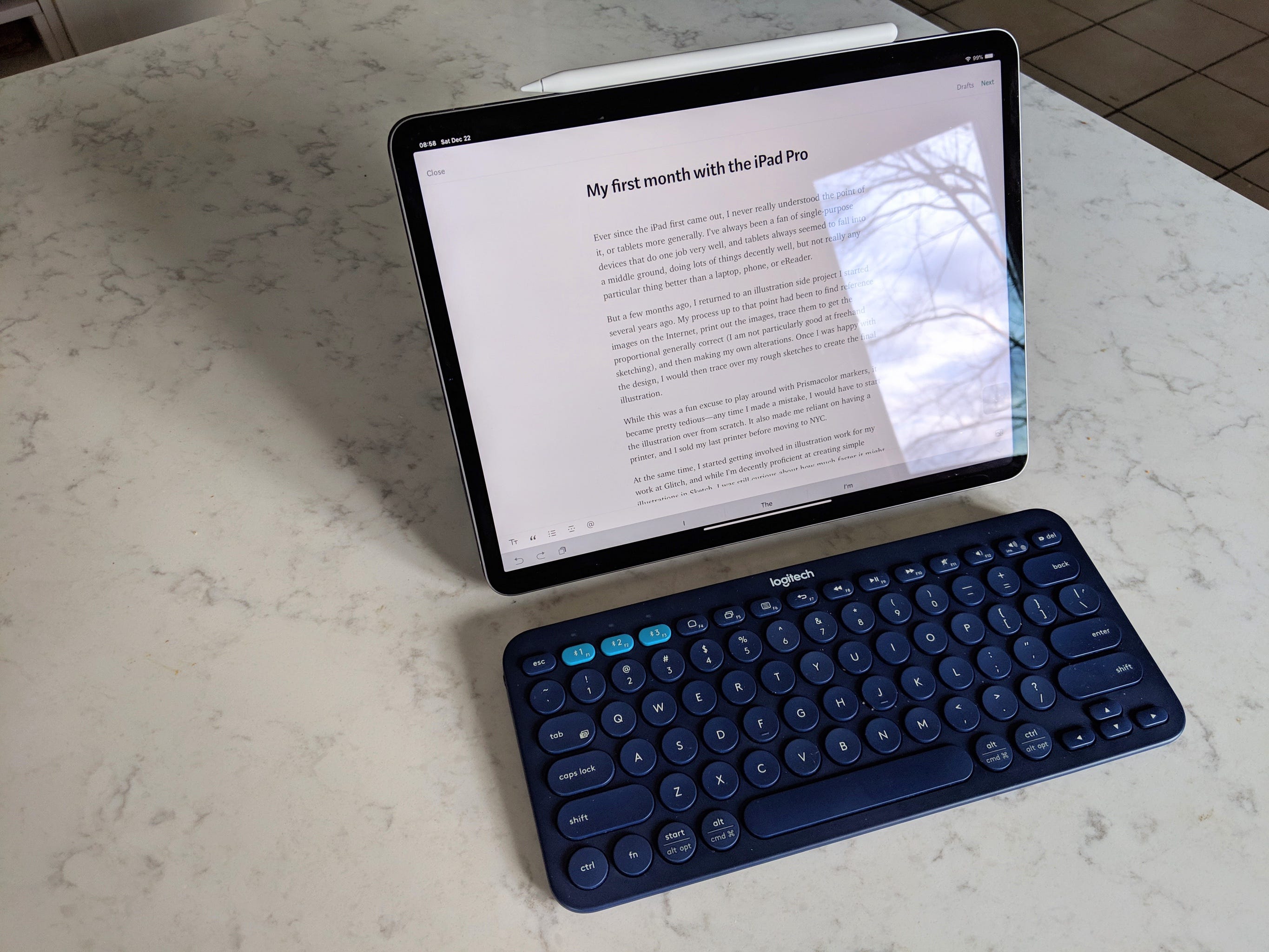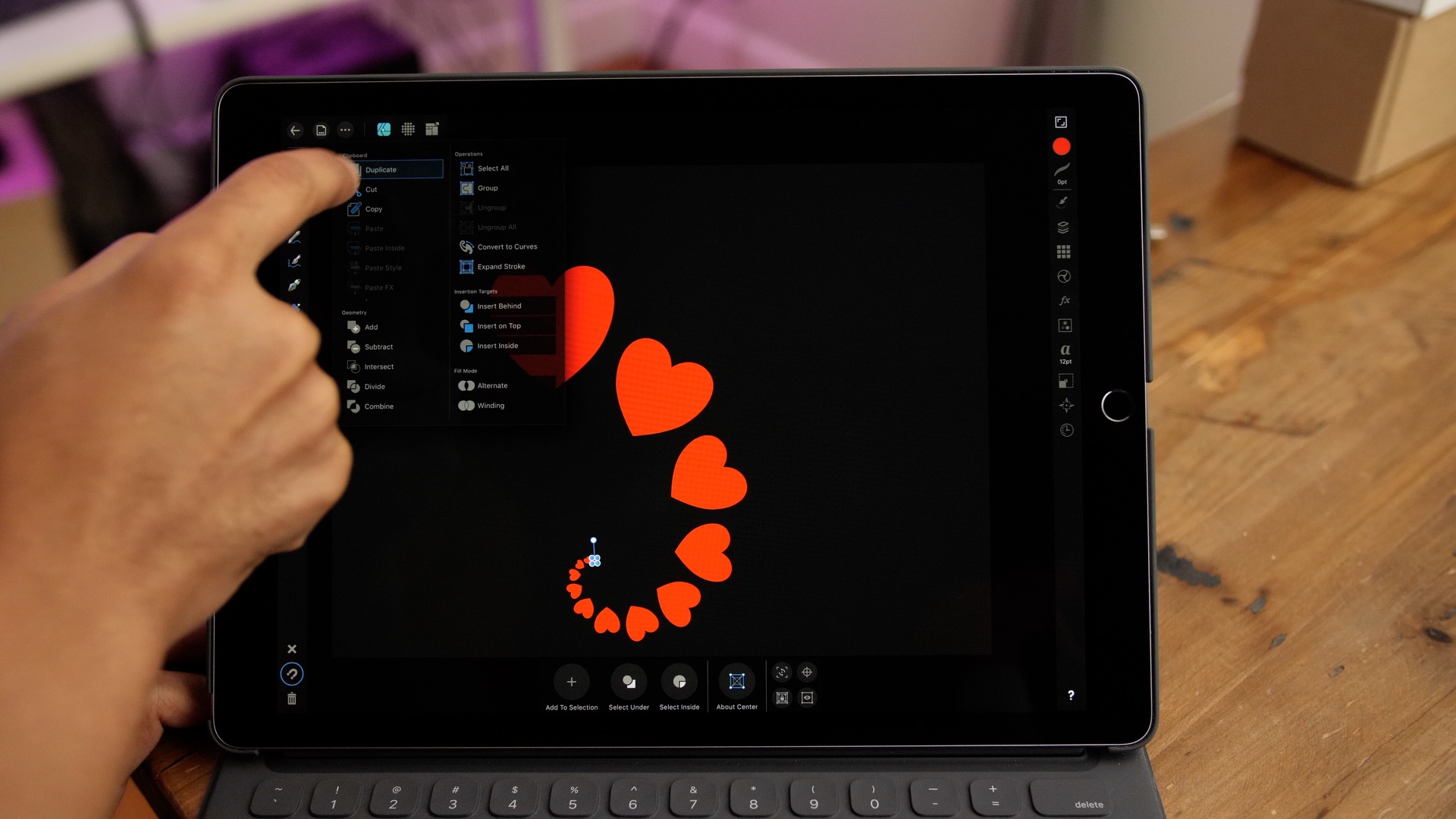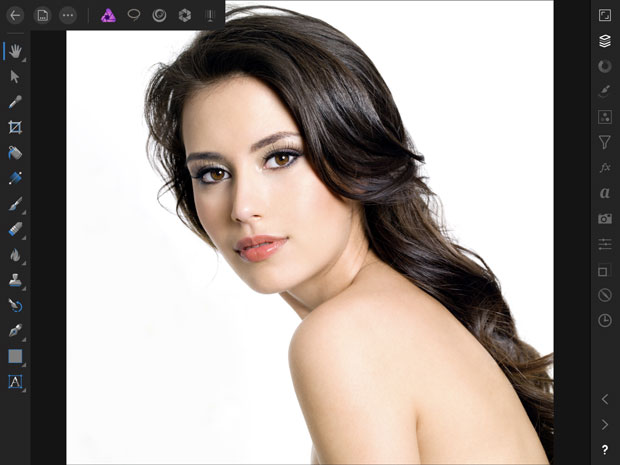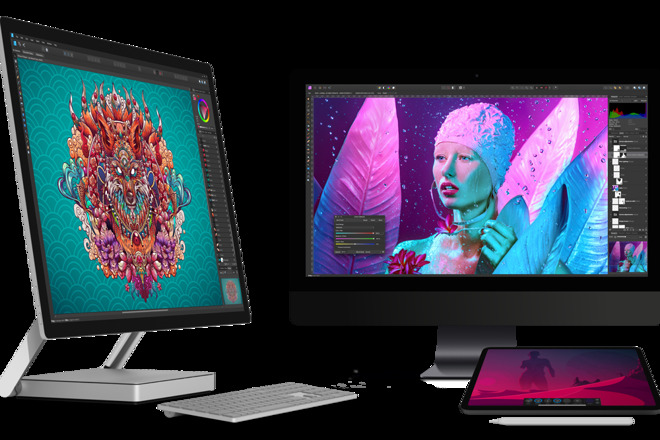- Affinity Ipad Pro 11
- Affinity Photo On Ipad Pro
- Affinity Designer Ipad Pro
- Ipad
- Affinity Photo For Ipad Review

Like Photoshop, Affinity will pull files both from an external drive, an SD Card, or the iPad Pro itself. You’ll want to make sure you have a USB-C SD card reader or a USB-C external drive. From there, simply plug the device into your iPad Pro. Then, navigate to the Affinity app and select the ‘+’ sign to create a new Document. Affinity Photo for iPad is a genuine desktop-grade, professional photo editing app. Completely reimagined for iPad with the same power as the desktop version and with complete file format compatibility, you can work across the same document wherever you are, without any compromise. IPad Pro 12.9' (2018) Wi-Fi Original Poster 1 year ago Affinity Designer and Photo for iPad have been updated to handle Affinity Publisher documents so you’ll be able to open, edit and export Publisher documents on the move.
- Mar 24, 2021 Built by former Apple engineers, Astropad enables you to turn your iPad Pro into a graphics tablet for your Mac. Download Astropad and the free Mac companion app, and you can use your iPad just like a graphics tablet, using the Pencil to draw directly in any Mac app, including Photoshop, Illustrator, Affinity Designer and so on.
- I am using Duet Display to use my iPad as an extended monitor and writing/drawing tablet. Unfortunately, I discovered that Procreate does not offer a Mac app. So, I asked over on the Mac subreddit for recommendations for a comparable drawing app on the Mac. So far, it sounds like Affinity Designer might be the closest I'm going to get on the Mac.
With Apple’s 2019 operating system upgrades, you can connect your Mac and iPad to extend or mirror your desktop onto your iPad’s display. You can then draw on your iPad using an Apple Pencil to edit documents in your Affinity Mac apps.
Sidebars appear on your iPad screen and can be repositioned to suit your preferences. On the left or right is a set of keyboard modifiers and shortcuts. At the top or bottom of the screen is a Touch Bar containing context-sensitive tools for your Affinity app—like the one found on MacBook Pro, yet available through Sidecar on other Mac models.
The ‘Move to iPad’ option (available upon clicking any window from your main desktop) lets you interact with the window directly from your iPad, so you can take advantage of pencil pressure and other dynamics even while your iPad is not actively attached as a second display.
Connecting your devices via Sidecar
You’ll need a Mac running macOS 10.15 Catalina and an iPad running iPadOS 13. Sidecar can work with a wired connection (Lightning or USB Type-C) or wirelessly. Bluetooth, Wi-Fi and Handoff must be switched on for a wireless connection to work.
Sidecar will stay connected within a range of 10 metres (30 feet); both connected devices must be logged into the same iCloud account in order for Sidecar to work.
To connect your devices using Sidecar, open the AirPlay menu and choose your iPad. When Sidecar is in use, the AirPlay menu changes to an iPad icon. Click it for instant control of what is displayed on your iPad: whether it mirrors or extends the Mac desktop and shows additional Mac shortcuts alongside the desktop. There are also links to display and Sidecar preferences.
Tip: If you don’t see the AirPlay icon near the right end of your Mac’s menu bar, go to System Preferences, click Displays and turn on Show mirroring options in the menu bar when available.Sidecar works with one iPad at a time, but it can be used alongside additional external displays.
Affinity Ipad Pro 11
To switch from wired to wireless or vice versa, disconnect the Mac from the iPad using the AirPlay menu bar icon, then reconnect.
Moving apps between displays

After you’ve first connected to Sidecar, your iPad will become a secondary display by default, allowing you to drag apps and other things directly between your devices.
You can also move app windows between your devices by hovering over the green button at the top-left corner of a window and selecting the Move to iPad option.

By switching an Affinity app to Separated Mode (Window > Separated Mode), you can move your desktop canvas to your iPad, to take advantage of the Apple Pencil and iPad gestures, and arrange toolbars and panels on your Mac’s screen. For example, spread two fingers apart on your iPad’s screen to zoom in on fine details in your artwork, or use iPadOS’s text-editing features to copy, paste and undo using the on-screen keyboard.


Other iPad features remain available while Sidecar is running—just swipe up from the bottom of the iPad screen to switch to another app; the connection to your Mac will be maintained.
You can open another app in a floating window to one side of your Affinity apps, for example, to follow a tutorial in Safari.
- Find an app’s icon in the Dock, on the Home screen or in Spotlight search results.
- Hold a finger on it till it pulses, then drag it.
- Use another finger to return to your Affinity app.
- Drop the second app on top of your Affinity app to open it in a Slide Over window.
To return to the Mac desktop on your iPad, tap the Sidecar icon in the iPad’s Dock.
Using the iPad as an extended or mirrored display
Affinity Photo On Ipad Pro
As with other secondary displays, you can use your iPad to expand or mirror your Mac desktop.
With your Mac and iPad side by side, you can move the pointer between screens and position windows on either screen, allowing you to organise your tools across each of your devices.
Tip: To move the pointer between screens in a way that reflects their relative physical positions, go to System Preferences’ Displays pane, click the Arrangement tab and drag the screens’ representative rectangles into the desired positions.Using Affinity Publisher with the Pages panel on your iPad screen is a great way to access your page arrangement through the iPad while giving you access to each page in full screen mode on your desktop. Similarly, you might keep your canvas and the Layers panel on different displays when using Affinity Photo or Affinity Designer.
When working with a marked-up version of a piece of artwork, you can arrange it so that client feedback is shown on your iPad while you implement changes on your Mac’s display. You can add additional notes while you work using the Apple Pencil.
Mirroring your Mac desktop through your iPad screen is great for sharing your work with others, allowing you to showcase features such as node alterations and shape transformations.
With Sidecar enabled, you can edit an embedded image directly on your iPad with a live update taking immediate effect on your Mac’s screen, which might be mirrored to a conference room display for your team members to collaborate.
You can also check and preview PDFs prior to export on your iPad screen.
Apple’s Sidecar documentation (available here) includes an explanation of Sidecar’s sidebar tools and the touchscreen gestures you can use to control Mac apps.
Affinity Designer Ipad Pro
Just as Serif is taking on Photoshop with its Affinity Photo editor and InDesign with Affinity Publisher, so Affinity Designer sees the company competing with Illustrator. This particular app was the first one to be released as part of the Affinity range, and over the course five years development has been strong.
Ipad
Affinity Designer is a vector drawing app that, despite being amazingly cheap, offers professional-level tools that can be used for all manner of projects. While this is clearly a rival to the likes of Adobe Illustrator and Sketch, you'd be forgiven for initially dismissing it as being underpowered. But don't be fooled. Serif describes this software as a 'stripped back, pro-end workhorse', and it's absolutely right.
Designer can handle huge documents with ease and gives you the option of switching between vector and raster workspaces, and the ability to work in RGB or LAB color spaces at up to 32-bits per channel. There is a wide range of vector tools available in the app, and vectors can have an unlimited number of strokes and fills for maximum flexibility. Grids and guides are advanced and powerful, and the isometric option will be welcomed by many users.
Affinity Photo For Ipad Review
For anyone switching from Illustrator or collaborating with Illustrator users, the good news is that Designer can open AI and EPS file, although sadly it's not possible to save as AI. There are a number of both pixel and vector brushes depending on which mode you're working on and, importantly, performance is impressive.
For all of its brilliance, Affinity Designer is lacking in a few areas. It's a shame to see that there is no support for scripting or animation, and also that there is no plugin support.
What's new in 1.8.3?
- Various stability and performance improvements
Verdict:
Affinity Designer is an astonishing achievement by Serif; this is a highly accomplished design tool which fits beautifully into the Affinity range and serves as a genuine alternative to the big names such as Illustrator.
